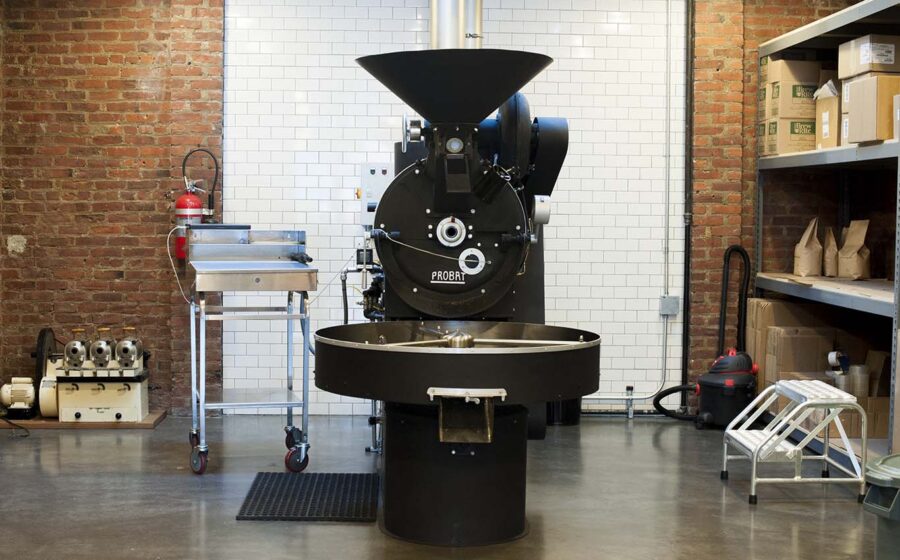[V]isit Parlor Coffee any Sunday and expect to see David Billings in the back, hunched over, tweaking and probing, crafting the perfect roast on a refurbished 1965 Probat. Surely the half-century-old machine has more than a few stories, but the one that Parlor’s owner, Dillon Edwards, has to tell is his own.
It was the spring of this year, and Parlor was inching closer to opening their roastery in Brooklyn’s Fort Greene neighborhood. Edwards had gone through a friend who had worked with him at Bonanza Coffee in Berlin, to source a vintage Probat UG-22. Edwards submitted his final payment on the roaster through Reus and waited. And waited. He says finally, tired of not having the estimated time of arrival confirmed, he had to take matters into his own hands.
“I had to do was literally buy a plane ticket two months later, fly to Amsterdam and drive around the Dutch countryside to the border of Germany” looking for my roaster.
“What I had to do was literally buy a plane ticket two months later, fly to Amsterdam and drive around the Dutch countryside to the border of Germany,” he says. With some friends from Bonanza, Edwards traveled along the German-Dutch border searching for his roaster until they found it in a shop in Holland, safe and ready to ship.
“Kind of like any great story, the more layers I peeled back the more complexity was revealed. Essentially the guy that sold it to us was kind of the black sheep of the Probat family, sort of been excommunicated from Probat.” Peter von Gimborn’s great-grandfather founded the company that became Probat and his father was once the managing director.
But Peter’s own company Kaffeetechnik, which distributes and services Probats, didn’t have the same luster as Probat. Another roaster, Rene Macaulay of People’s Coffee in New Zealand, blogged about wresting their UG-22 from von Gimborn’s “cold, arrogant hands.” Probat, which had contracted exclusive distribution rights to Kaffeetechnik, severed ties in 2006, partly because of “his behavior towards customers and business partners,” according to marketing manager Jens Roelefs.
For Edwards, Kaffeetechnik had arranged for the purchase of the vintage UG-22 and contracted the refurbishment and customization out to a Dutch shop, who were refusing to release the roaster, saying von Gimborn had yet to pay for service. “Essentially we had to force Peter to settle his debts—maybe not force but encourage Peter to settle his debts,” Edwards explains cagily, “and ultimately get our roaster on a boat.” When I reached von Gimborn by phone in Germany, there were more layers to peel. He said dealing with communication through the friend had contributed to delays and said the Dutch shop he first paid for the service subcontracted it to a second, which demanded payment from von Gimborn, leaving the machine in bucolic purgatory in Holland until von Gimborn paid again.
In the end, the Probat crossed the Atlantic and was roasting coffee again in June. These machines used to be found in barns, barely worth the cost to haul for scrap. Now they cost a ransom.
—Peter D’Amato is a writer based in New York. The photo at the top is his.















